Honu (Sea Turtles)
What kinds of turtles can we see in Hawaiian waters?
Of the 7 species of sea turtles, only 2 are found in coastal waters – the Pacific Green Sea Turtle (in Hawaiian, they’re called Honu) and the Hawksbill (in Hawaiian, ‘Ea). Only the Honu are commonly seen though.
What do Honu eat?
When Green Sea Turtles first hatch they’re believed to be omnivores (they’ll eat anything they can catch). Once they’re about the size of a dinner plate (at about age 4) they seem to settle down along a shallow reef, and then they’re almost exclusively vegetarian feeding primarily on 9 different types of algae. But even at this stage of their lives, they’re not obsessive about it – we’ve seen them munching on passing jelly fish and even approaching fishing boats to feed on scraps of fish tossed overboard!
How do turtles stay underwater so long? Do they have gills?
Turtles are reptiles, so they breathe air into their lungs just like we do. But they’re much better breath holders than we are! A resting Honu can hold her breath from 2 to maybe as long as 4 hours. Of course being cold blooded, the temperature of the water has an effect on this ability (colder water slows down turtle metabolism, which translates to longer breath holding ability).
Why do we see turtles lying on the beach? Are they sick or are they laying eggs?
While turtles do lay their eggs on beaches in Hawaii, it’s estimated that over 90% of them migrate up to the French Frigate Shoals (islands about 680 miles northwest of Anaeho’omalu Bay) to do it. Why the turtles bask on the beaches here isn’t really understood. For a long time, researchers thought lying in the sun helped to warm the turtle which helped her to digest her food faster. But after taking the internal temperatures of basking turtles (which isn’t that easy – it involved rectal thermometers and relatively cooperative turtles) and finding they’re not much warmer than they are in the ocean, researchers are now beginning to think that hauling out onto windy beaches might be a way for the turtle to avoid his predators.
What are the main predators of Green Sea Turtles? And how can a predator even bite through the turtle’s shell?
When the honu are hatchlings, they’re easy prey for crabs, birds, and even some carnivorous fish. As they get bigger and older, they’re preyed upon by big pelagic (deep-ocean) sharks including tiger sharks and gray sharks. Unlike their cousins on land (tortoises) sea turtles cannot pull their bodies up into their shells, so their heads and their flippers are always exposed.
How long do Honu live? And how big do they get?
Though no one is really sure, Green Sea Turtles probably live into their 80’s. A fully grown Honu has a carapace (shell) 4-5 feet in diameter and weighs around 350-400 pounds. Honu grow pretty slowly too – they can’t have turtles of their own until they’re somewhere between 25 and maybe as old as 50 years! Surprisingly, you can’t tell the gender of a Honu until he reaches sexual maturity, when if it is a “he”, he’ll grow a very long tail. Adult female turtles keep their short, stubby tails.
All turtles are green – why are Honu the only ones called “Pacific Green Sea Turtles”?
Honu aren’t called “Green” sea turtles because of the color of their shells, but because of the color of the fat in their bodies. And people know about the color of the fat because before turtles received protection, turtle meat was considered a real delicacy. In fact, before modern refrigeration was invented, turtles were a very easy food source to keep aboard ships. All the crew had to do was turn the turtle upside down and put wet burlap over it. That kept the turtle alive and unable to escape until the crew was ready to kill and eat it.
Are Honu protected now?
Honu (and all other sea turtles in Hawaii) are fully protected under the federal Endangered Species Act and under Hawaii state law. It is illegal to hunt, injure or even harass a sea turtle, and you can’t hold one in captivity without a special permit (which is only issued for research or educational purposes). It’s ok to swim, snorkel or dive near a turtle as long as you’re not putting the animal under unnecessary stress (so riding, or even touching, a turtle isn’t allowed – and swimming directly over a surfacing turtle isn’t allowed either). Violators of these laws can be fined as much as $100,000 and even may be sentenced to time in prison.
What’s the best way for me to see a Honu?
We’re really lucky on the Kohala Coast of the Big Island, because apparently the Honu find it as great a place to live and visit as we do! Most sheltered bays along the Kohala Coast serve as homes to the turtles, so swimmers, snorkelers and divers are likely to encounter them frequently in shallow water. Turtles commonly bask on the beach at Anaeho’omalu, and lately have entered the fish ponds there. The Glass Bottom Boat at Anaeho’omalu drifts almost daily over a spot on the reef where the Honu congregate to get cleaned, and if the turtles aren’t at their cleaning station, they’re generally spotted grazing on the reef or surfacing for a breath.
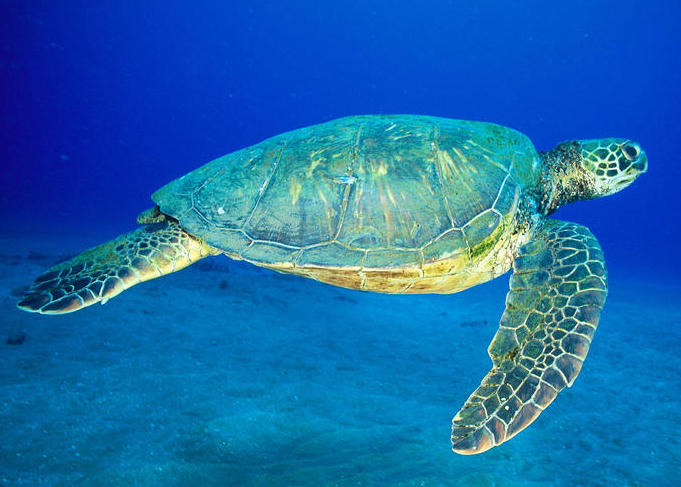
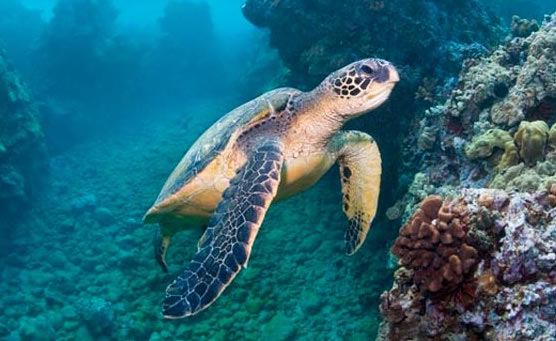
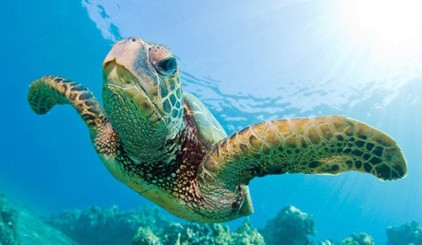
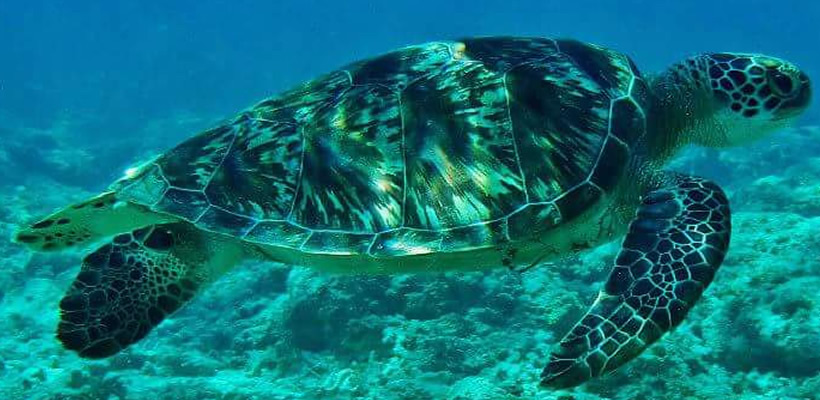
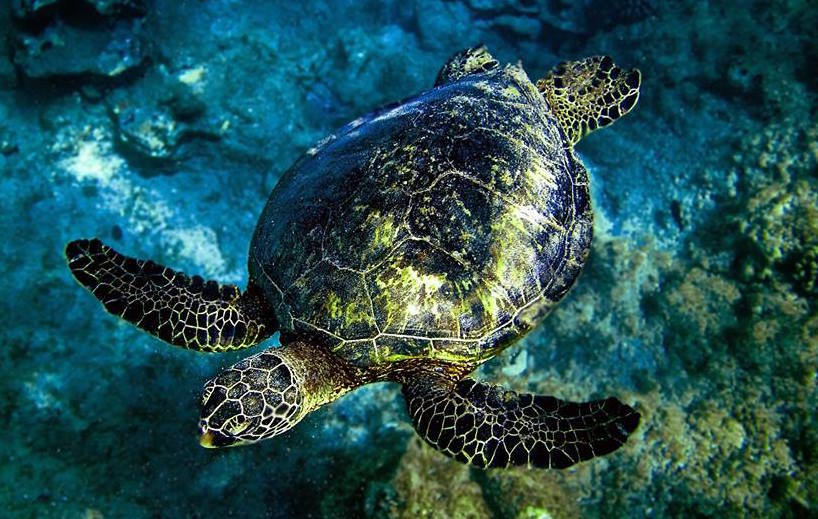




















 Hawaiian Green Sea Turtles (Honu)
Hawaiian Green Sea Turtles (Honu) 